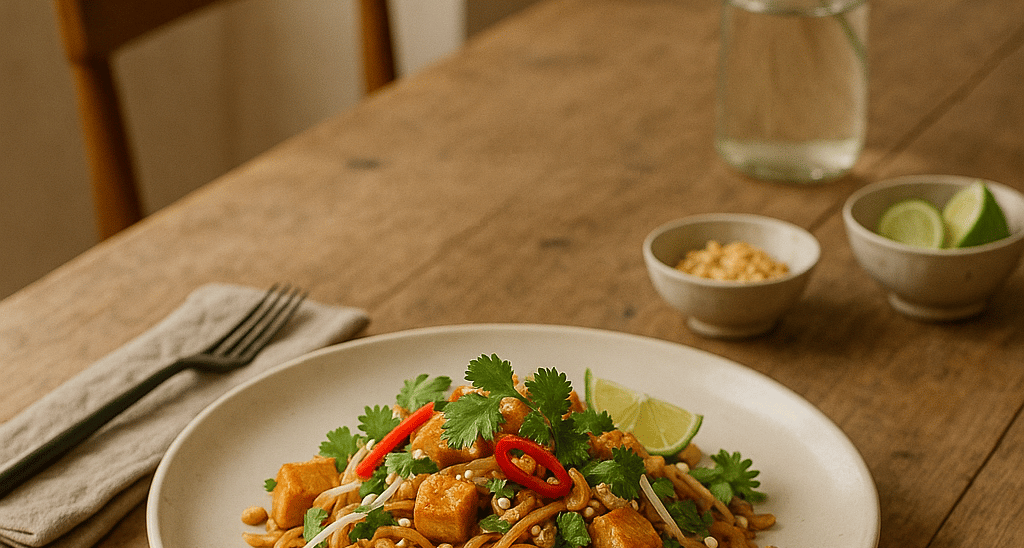Rirkrit Tiravanija
What happens when a dish becomes a performance? Discover the Relational Pad Thai: art you can taste and share
MASTERCHEFS & MASTERPIECES
Charlotte Madeleine CASTELLI
8/4/20253 min read


I have rarely encountered a figure capable of so radically deconstructing the very concept of the artwork as Rirkrit Tiravanija. His shared Pad Thai in the gallery is not merely a performance, nor a simple culinary gesture: it is a poetic declaration. A gentle form of resistance against the self-referential nature of the white cube.
Serving steaming dishes in an exhibition space made me realize that art can nourish — truly — and that the audience is no longer a spectator, but an ingredient.
At the heart of the Masterpiece & Masterchief project, I feel that his work offers us a precious key: the distance between creator and viewer, between taste and thought, between kitchen and installation, no longer exists. The artwork is the time we spend together, the flavor we share, the conversation that arises between a bite and a smile.
If today an artist can also be a chef, and a chef an author of visions, it is because someone like Tiravanija had the courage to bring a frying pan into the center of the museum and show us that even there, in the scent of food, the most authentic art exists.
One of the iconic dishes of his performances is Pad Thai, reinterpreted with minimalist aesthetics and harmonious flavors — perfect for a conceptual tasting to be served in artistic contexts.
Recipe – The Artist’s Pad Thai (serves 4)
Main Ingredients
200 g thick rice noodles
200 g firm tofu, pressed and cubed
2 garlic cloves, minced
1 fresh red chili, thinly sliced
2 eggs (or scrambled tofu for a vegan version)
100 g bean sprouts
2 scallions, thinly sliced
50 g roasted peanuts, chopped
1 lime (juice + wedges to garnish)
Fresh coriander leaves and Thai basil
For the “artistic” sauce (color & flavor)
3 tablespoons tamarind paste
2 tablespoons fish sauce (or tamari for vegan version)
1–2 tablespoons palm sugar (or brown sugar)
1 tablespoon soy sauce
A drizzle of peanut oil
Method
Prepare the noodles according to the package instructions. Drain and set aside.
In a large pan or wok, heat the oil and sauté garlic and chili until fragrant.
Add tofu cubes and sauté until golden and crisp.
Push tofu to one side of the pan, crack in the eggs (or add crumbled tofu) and lightly scramble.
Add the noodles and toss well to combine.
Pour in the tamarind–soy–sugar sauce and stir until everything is well coated.
Add the bean sprouts and scallions, stir-frying briefly to keep them crisp.
Plate the dish with care: either centered or “deconstructed” like a minimalist composition on a white plate.
Garnish with peanuts, fresh coriander, Thai basil, and lime wedges.
In reinterpreting the experience of Relational Pad Thai, inspired by the gentle yet radical poetics of Rirkrit Tiravanija, we cannot limit ourselves to taste alone: the entire space must become the artwork. The minimalist plating—with noodles gathered at the center and garnishes arranged like calibrated marks on a white canvas—recalls the visual grammar of conceptual installations, where every element is simultaneously form, balance, and intention. But art does not end on the plate: it lives in the table, the materials, the light, the collective gesture of serving. I imagine a long, raw surface—perhaps reclaimed wood—free of tablecloths but inhabited by rich textures, where the tableware consists of handcrafted ceramics in matte, porous tones, chosen to highlight the vibrant contrast between the amber of tamarind, the glossy green of fresh herbs, and the vivid red of chili. No individual place settings—only shared bowls, unlabeled bottles, and crumpled natural linen placemats. The ideal environment is an open space where the kitchen is not hidden but offered as an integral part of the installation: here, preparation is performance, aroma is language, the meal is relationship. The light is warm, grazing, directional—designed to welcome rather than display. And after all, what happens when an artist places a frying pan at the center of a museum? The scene reverses, the audience gets their hands dirty, and the gesture gains meaning. It happens that, between a bite and a smile, we discover that even the design of space can nourish. And what if this were exactly where the next chapter begins?
© Charlotte Madeleine Castelli | All rights reserved
